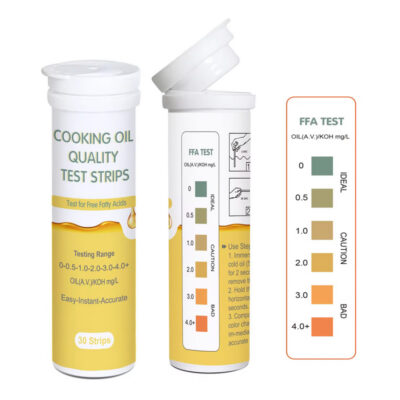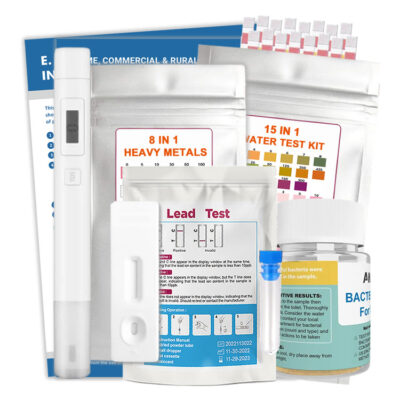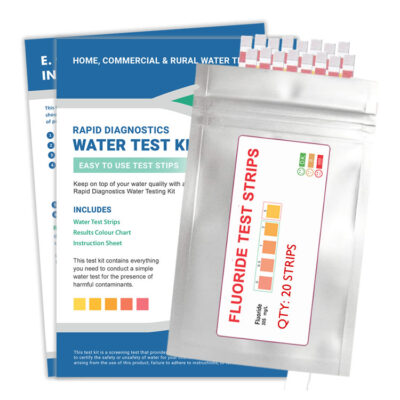How To Test Your Water. In Australia, most of us take water for granted though not all of us are aware that water quality can vary from one location to the next. Water sourced from city reserves travels through many kilometres of plumbing which can sometimes be corroded or damaged causing contamination. In many cases when pipes burst they are repaired or patched up. Old house plumbing is also an issue as lead was originally used to join pipes together and most of us don't look after our pluming until its too late. Country suburbs still reply on rainwater tanks, wells and dams. Most of this water is not monitored, which can be harmful to your health.
How To Test Your Water
If you suspect that your water is not clean, the following points will help you determine your water quality. For those that rely on water from tanks, wells or dams, we suggest that you regularly test your water quality.
Appearance Test
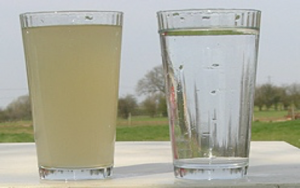
Inspecting the colour, smell and taste of your water is one of the simplest tests to do. Fill several clean glasses of water from several locations within the property and compare with a glass of filtered of bottled water. Hold the glass in front of a light and closely inspect to see if there is any colour difference and if there is any sediment.
If you see a difference between the bottled and tap water, this is always the first sign of water that should be tested. An odd colour can be caused by many contaminants including iron which changes in the presence of oxygen to yellow or red a sediment.
- Iron Yellow or colour may cause stains on laundry and fixtures and may have a bitter taste.
- Manganese Causes black or purple color in water and may stain fixtures, and cause a bitter taste
Smell / Taste Test
Tasting your water is the next point of action, simply tasting it can help you determine if there is an issue with your water. If your water tastes odd it's possible that it has some sort of contamination, following are a few examples.
- Iron Has an odd bitter taste.
- ManganeseHas an odd bitter taste
- Hydrogen SulphideSmells like rotten eggs
If you experience any of the above, go onto the next step. If you don't feel confident about testing your own water, we suggest getting a professional to do the test for you.
Water Test Kits
Purchasing a water test kit can give you an indication of the quality of your water. Most water test kits use test strips with pads which are dipped into water for a few seconds, wait another 60 seconds and compare the colours on the test kit pad with the colour chart provided.
Using a test kit with as many parameters as possible will help you cover a broader range of issues. The following parameters are examples though it's important to understand that these are some of the most common parameters that you can test for. A professional can test up to 50 parameters if they find that your water needs further testing.
1.pH
2.Total Alkalinity
3.Nitrite
4.Residual Chlorine
5.Total Chlorine
6.Water Hardness
7.Bromine
8.Nitrate
9.Cyanuric Acid
10.Lead
11.Iron
12.Copper
13.Fluoride
14.Chromium/Cr(VI)
The parameters that a kit tests for will have a value that you should record to compare with water standards. The standards will vary depending on the intended use of the water. You can find more information by contacting your local council or water board.
How To Use A Water Test Kit
Testing your water with a quality water test kit is simple though it's important to follow the instructions in detail. Test strips include pads that can deteriorate of touched, left out of the packaging or exposed to sunlight.
Once you receive your test kit, open the packaging and remove the instructions. Read over the instructions in detail and follow the steps provided which will include the following. We have included "Do not" at the top of the list as they are the most important.
Do Not
- Do not touch the test pads at any time as they can be contaminated.
- Do not remove test strips from the foil package unless you intend on using them straight away.
- Do not leave the test strips in direct sunlight as they will degrade.
- Do not expose the test strips to moisture as they will degrade.
- Do not store test strips in a fridge or freezer.
- Do not compare test strip with colour chart after 120 seconds of dipping the test strip into water as they will fade back to their original colour.
Testing Procedure
- Have a pen and piece of paper handy so that you can take note of the results
- Open the plastic packaging, remove instructions and read from start to finish.
- Open silver foil package that contains test strips and remove one test strip, place test strip on a flat clean surface.
- Re-seal the silver foil package and place back into the plastic package it came in.
- Dip test kit colour pads in water to be tested, wait a few seconds and remove.
- Place the test strip on a flat surface and wait for 60 seconds
- Compare the test strip colours with the colour chart provided within 60 to 90 seconds.
- Note down the results of each parameter on a piece of pater.
More information on what your test results mean here: Water Test Kit, How-To & Results
Professional Water Testing
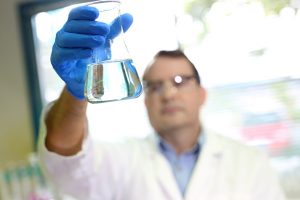
If you find that your water is contaminated or if you are not comfortable to run your own tests, contacting a professional water tester is always a good choice. They can determine if your water is safe though if an issue is detected, they will not provide a solution unless the problem is simple to detect. Water contamination issues should be inspected by a plumber or your local water board.
You can expect to pay $200-$500 for tests you post to a testing lab or $300+ to have a professional water tester visit your property.
Common Causes of Water Contamination
Many reasons including: generally cause water contamination
- Sewage & Waste Water Sewage, farm and factory liquid waste is sometimes discharged into water sources which can mix in with local water supply. These chemicals can be poisonous for animals, plants and humans.
- Rubbish Dumping Dumping of rubbish into water lakes and rivers causes problems with water quality. These include plastics, aluminium, steel, Styrofoam and waste chemicals. Many of these can take hundreds of years to decay in water.
- Industrial Waste Industrial waste is one of the worst water pollutants as it includes dangerous chemicals including asbestos, mercury, lead and mercury which are hazardous to people, plants, animals and environment.
- Acid Rain Acid rain is common in industrial and highly polluted areas. When it rains, acidic particles will mix with vapour resulting in acid rain collected by rainwater tanks.
- Eutrophication Eutrophication happens when there is an increase of nutrients in water bodies. This causes a bloom of algae in the water. Eutrophication depletes oxygen in the water which affects aquatic animal population and can contaminate drinking water.
- Lead Homes built before 1986 most likely have lead in pipes, fixtures and solder. When they corrode significant amounts of lead enters into water boiling water.
Recapping
- Determine why you are testing your water
- Does your water taste or smell odd, does it have an odd colour?
- Are you close to an industrial area and suspect that your water has been contaminated?
- Is the water being forced from a dam, tank or well and you suspect that the water is not clean?
- If yes to any of the above, start with a simple water test kit.
- If you don't feel comfortable testing your own water, have a specialist do it for you.
- Inspect the results, if you suspect that further testing is required to contact your local water board.
To learn more on How To Test Your Water, visit our FAQ's page or visit your local water board website.



